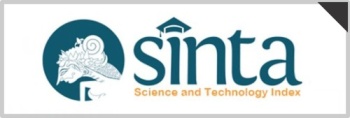Interpretation of Story Themes from a Hermeneutical Perspective at the Prabu Geusan Ulun Museum
(1) Universitas Indraprasta PGRI
(2) Institut Seni Indonesia Surakarta
(*) Corresponding Author
Abstract
This paper is the result of research on the Prabu Geusan Ulun Museum in Sumedang which is studied through a hermeneutic perspective to explore the interpretation of the story themes contained therein. This research is based on transformation theory with hermeneutic analysis and interpretation methods applied to texts and symbols. In interpreting the various story themes contained in the Prabu Geusan Ulun Museum, especially those related to Sundanese history and culture. The story of Prabu Geusan Ulun and other main characters in the museum is analyzed as a symbol of leadership and wisdom. Using a qualitative approach and hermeneutic method, this research seeks to uncover the symbolic meaning of the various themes of the stories on display. Understanding the collections and narratives in this museum is done through the interpretation method that focuses on text and symbol analysis.
Museums in a hermeneutic perspective function as a medium to interpret various themes of Sundanese history and culture. This research produced three main findings, namely the study of the Kingdom of Sunda and Prabu Geusan Ulun, analysis of the symbolic meaning of artifacts, and interpretation of cultural symbols in the Prabu Geusan Ulun Museum. In addition, this research examines the themes of heroism, cultural identity, customary traditions, and visitor interactions in the museum. The researcher conducted further analysis to understand the various layers of meaning and emotional responses that arise in visitors' experiences at the museum.
The importance of the research contributes to cultural and museum studies, and enriches the hermeneutic literature in the context of museums. The research concluded several key aspects, namely the rich symbolic meanings in the museum's collections and narratives, which reflect Sundanese historical and cultural values. The exhibition of artifacts presented in the museum provides important cultural contextualization, thus deepening the understanding of historical heritage that remains relevant to today's society. The layered interpretations that emerge from the various symbols and texts allow visitors to explore deeper meanings, according to their own backgrounds and experiences.
Keywords
Full Text:
PDF (Indonesian)References
D. M. Kaplan, Teori Kritis: Paul Ricoeur. Yogyakarta: Pustaka Utama, 2010.
P. Ricoeur, Hermeneutics and The Human Science. Cambridge: Cambridge University Press, 1981.
E. Sumaryono, Hermeneutik, Sebuah Metode Filsafat. Yogyakarta: Kanisius, 1999.
Sunarmi, Democracy in Indonesia Towards Mangkunegaran: The Fade of Javanese Royal Palaces Political Power, Al-Ulum, vol. 18, no. 1, pp. 231246, 2018, doi: 10.30603/au.v18i1.285.
A. Wachid, Hermeneutika dalam Sistem Interpretasi Paul Ricoeur, Badan Pengembangan dan Pembinaan Bahasa, 2022. https://badanbahasa.kemdikbud.go.id/artikel-detail/881/hermeneutika-dalam-sistem-interpretasi-paul-ricoeur# (accessed Dec. 12, 2024).
A. Kosasih and S. Mahdi, Pelestarian Naskah-Naskah Kuno Di Museum Prabu Geusan Ulun Sumedang, J. Pengabdi. Kpd. Masy., vol. 91, no. 5, pp. 16891699, 2018.
C. Norberg-Schulz, Genius Loci: Towards a Phenomenology of Architecture. New York: Rizzoli, 1980.
B. Tschumi, Architecture and Disjunction. Cambridge: MIT Press, 1996.
G. E. Hein, Learning in the Museum. London: Routledge, 1998.
DOI: http://dx.doi.org/10.30998/lja.v8i1.26193
Refbacks
- There are currently no refbacks.




